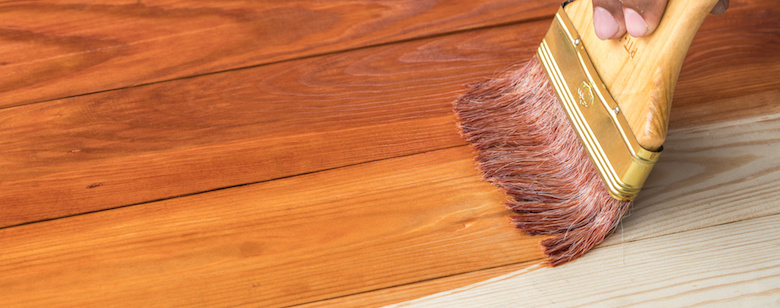
What is treated pine?
Treated pine is plantation pine timber that a preservative has been applied to. This makes it last longer as it has extra protection against things like insects and fungal attack.
Treating pine means this fast growing, sustainable timber can be used in many more applications rather than scarce native species.
Is treated pine safe?
All timber preservatives used in Australia are approved by the Australian Pesticides and Veterinary Medicines Authority (APVMA) and approval is only granted to treatments that are effective and safe to use.
When treating timber, there are a series of Australian Standards that must be adhered to. These specify the concentration of a particular preservative and how deep it has to penetrate into the wood to protect it from the expected biological hazard to which it will be exposed as well as labelling requirements.
When working with any timber be it treated or not, we recommend following these safety tips:
- Wear gloves.
- Wear eye protection and dust mask.
- Don’t burn. Off-cuts can be disposed of in landfill but check with local authorities.
- Visit all of our Product Timberlink Safety Data Sheets (SDS) (previously called MSDS).
- We have also created a Timber Safety Guide for DIYers.
How long does treated pine last?
Not all treated timber is the same. To make sure the timber you purchase will last, consider the hazards it will be exposed to once the project is completed. You then need to select a product with the appropriate hazard level or ‘H’ Level. H3 and above can be used outdoors but if the timber will be in contact with the ground, you will need a n H4 level or above.
Treated pine Hazard Table
| Hazard Class | Where the treated wood may be used | What the timber is protected against |
| H1 | Inside above ground | Borer susceptible hardwoods |
| H2 | Inside above ground | Termites – Not a risk in Tasmania |
| H3 | Outside above ground, periodic wetting but where the timber can dry out; some leaching | Insects, termites and moderate decay |
| H4 | In or on the ground subject to severe wetting and leaching | Insects, termites and severe decay |
| H5 | In or on the ground subject to severe wetting and leaching, with or in fresh water | Insects, termites and very severe decay |
| H6 | In contact with sea water | Marine borers and decay |
Colour isn’t the Best Indicator of Treatment
Don’t rely on the colour of the timber to decide on whether it has been treated or not. Different treatments affect the final colour of the timber differently. Colour can also vary along a stick and the way the colour pigment settles has nothing to do with whether or not the treatment has penetrated the timber. The easiest way to identify treated timber is to look at its treatment brand. This tells you who treated the timber, the chemical used and the treatment level which tells you which uses the timber is suitable for.
Always Reseal Cut Ends
When you cut a piece of outdoor treated timber, drill holes in it or adjust it some other way, you are actually altering the treatment envelope that was applied to the timber during the treatment process. This can make the timber susceptible to hazard attack particularly decay.
Therefore, with outdoor treated timber, all cut-ends, notches, check-outs, bolt holes, etc. that you make, must be resealed with an outdoor suitable resealing product such as Ecoseal® or Enseal®. These are available from your local timber store. With H4 treated timber, you should avoid placing a cut-end or notched out surface in contact with the ground.
Treatment and Weathering
Timber treatment does not protect against weathering. This greying of timber over time due to exposure to the sun and rain, can only be prevented by finishing the timber with a quality paint or stain and then maintaining it.
To ensure, an even application, we recommend applying the first coat to the timber prior to installation and then another coat after construction. For detailed information on how long different finishes will last, and how often you should re-apply, download a copy of the Wood Solutions Technical Design Guide #13 – Finishing Timber Externally. A maintained finish will ensure all that hard work will look good for many years to come.
